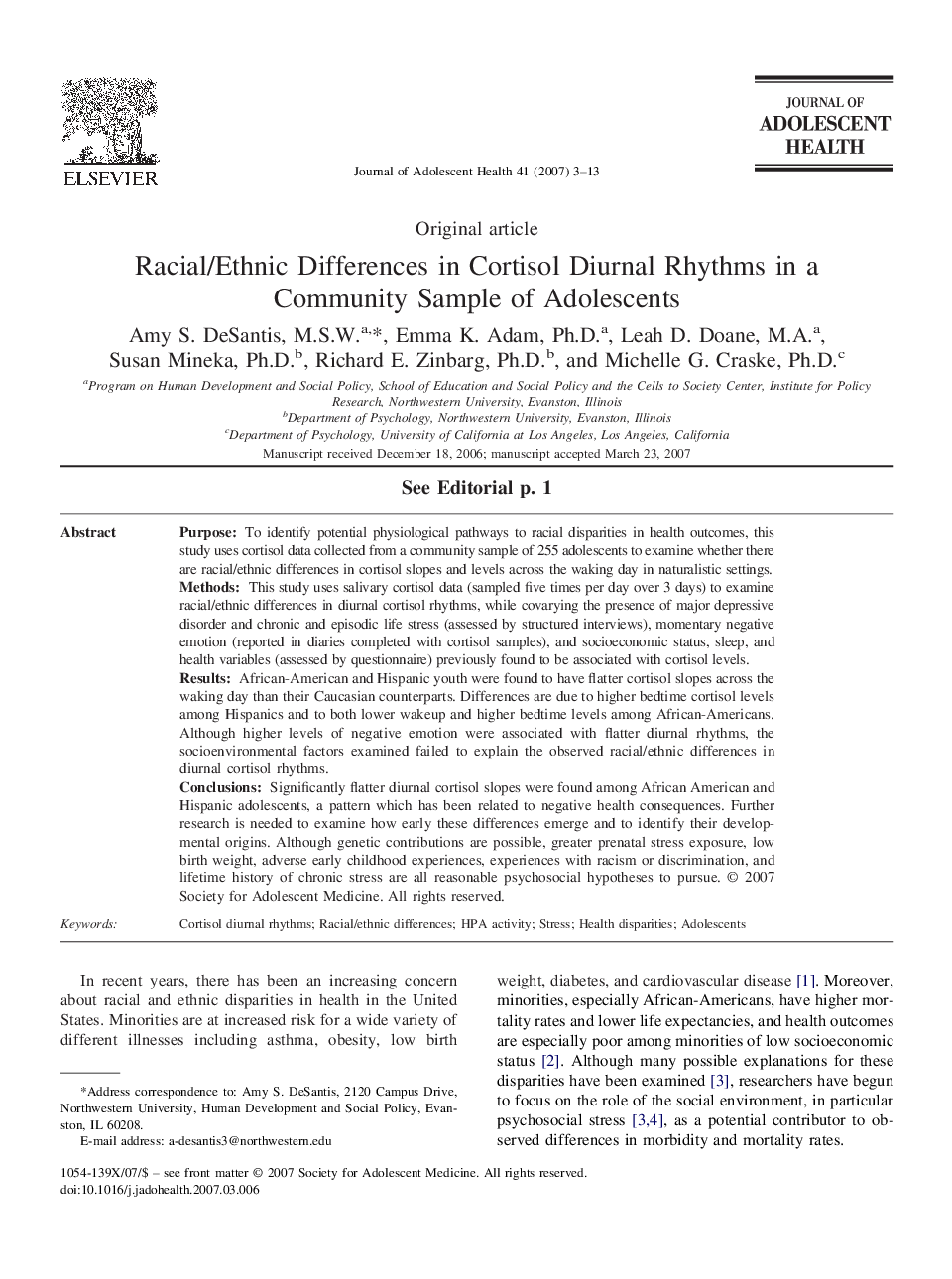| کد مقاله | کد نشریه | سال انتشار | مقاله انگلیسی | نسخه تمام متن |
|---|---|---|---|---|
| 1080705 | 950559 | 2007 | 11 صفحه PDF | دانلود رایگان |

PurposeTo identify potential physiological pathways to racial disparities in health outcomes, this study uses cortisol data collected from a community sample of 255 adolescents to examine whether there are racial/ethnic differences in cortisol slopes and levels across the waking day in naturalistic settings.MethodsThis study uses salivary cortisol data (sampled five times per day over 3 days) to examine racial/ethnic differences in diurnal cortisol rhythms, while covarying the presence of major depressive disorder and chronic and episodic life stress (assessed by structured interviews), momentary negative emotion (reported in diaries completed with cortisol samples), and socioeconomic status, sleep, and health variables (assessed by questionnaire) previously found to be associated with cortisol levels.ResultsAfrican-American and Hispanic youth were found to have flatter cortisol slopes across the waking day than their Caucasian counterparts. Differences are due to higher bedtime cortisol levels among Hispanics and to both lower wakeup and higher bedtime levels among African-Americans. Although higher levels of negative emotion were associated with flatter diurnal rhythms, the socioenvironmental factors examined failed to explain the observed racial/ethnic differences in diurnal cortisol rhythms.ConclusionsSignificantly flatter diurnal cortisol slopes were found among African American and Hispanic adolescents, a pattern which has been related to negative health consequences. Further research is needed to examine how early these differences emerge and to identify their developmental origins. Although genetic contributions are possible, greater prenatal stress exposure, low birth weight, adverse early childhood experiences, experiences with racism or discrimination, and lifetime history of chronic stress are all reasonable psychosocial hypotheses to pursue.
Journal: Journal of Adolescent Health - Volume 41, Issue 1, July 2007, Pages 3–13